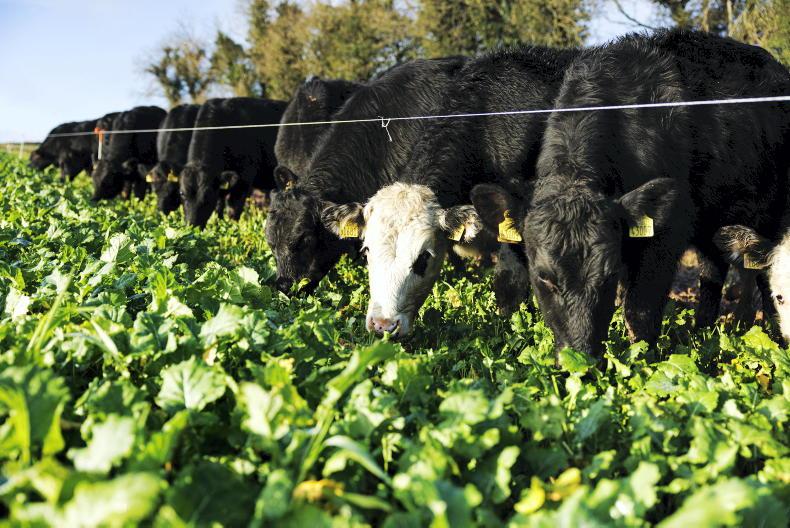Less forage crops are set to be grazed over winter if new rules set out in Ireland’s CAP strategic plan are not clarified.
Farmers who sow crops such as forage rape and stubble turnips for store lambs and light cattle have been hit with news that a grass lie-back the same area in size to the area planted with a forage crop must be available.
Earlier this year, it was not clear that the lie-back area needed to be grass.
This rule comes under conditionality (formerly cross-compliance), which means that this is also the case for farmers planting catch crops in ACRES who wish to graze these crops after 1 January.
Speaking to farmers at Tullamore Show on Sunday, a number of farmers informed the Irish Farmers Journal that they would no longer be able to grow catch crops for livestock due to this rule and could not ask tillage farmers to grow them for them either.
Presentation
A presentation for advisers by the Department on the rule which falls under the standards for good agricultural and environmental condition of land asks: “Has an adequate lie-back area or a backing fence been provided for non-grass forage crops that are being grazed in situ?”
However, the Irish Farmers Journal understands that having a backing fence instead of a lie-back area may only result in a reduction in the penalty enforced for not complying with conditionality and having a lie-back in place.
Some farmers may have planted forage crops for grazing in April and May - such as beet and kale - and these rules were not clear at this time.
Many are now planting crops after cereals and are not aware of this rule or have discovered the rule and have stopped planting.
A grass crop can be planted beside the forage crop to provide the lie-back area, but this adds massively to the cost of growing the forage crop and does not make sense financially on a specialist tillage farm.
Buffer zones
In February, the Irish Farmers Journal queried the requirement to have a grassland buffer around the perimeter of fields with grazeable forage or catch crops planted in them. The Department then updated this legislation to allow volunteer cereals to form the buffer.
At the time, the Department stated that the lie-back area must be equal to the area of forage crop planted, but did not specify it needed to be grass.
However, a grassland lie-back was outlined in the explanatory handbook published by the Department at the end of May.
The Department of Agriculture has not replied to a query from the Irish Farmers Journal on the issue.
Increase tillage area
The Government has a target to increase the area of tillage by 52,000ha by 2030.
As land is in demand from dairy farmers for nitrates rules, forage crops on tillage land are seen as one solution to help free up land for tillage as well as providing an extra income and benefiting the soil.






 This is a subscriber-only article
This is a subscriber-only article









SHARING OPTIONS: